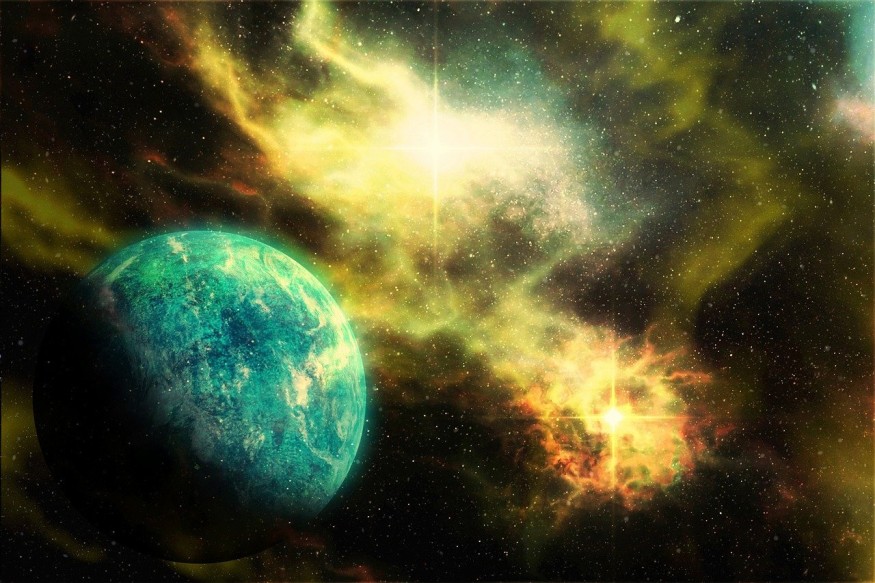
Using the powerful James Webb Space Telescope, researchers were able to find proof of quartz nanocrystals at high-altitude clouds of the hot Jupiter exoplanet WASP-17b.
Silicate Snow and Pure Quartz
The discovery was made possible with the Mid-Infrared Instrument of the JWST. It marks the first time for any particles of silica (SiO2) to be discovered in the atmosphere of an exoplanet.
Researcher David Grant from the University of Bristol, who is the first author of the study that details the discovery, explains how thrilled they were. Grant notes that they knew from observations using Hubble that there could be tiny aerosols in the atmosphere of the said Jupiter Exoplanet. However, they did not expect that these particles consisted of quartz.
Silicate accounts for the bulk of the Earth, the Moon, and other rocky objects across the solar system. The material is extremely common across the entire galaxy.
However, the grains of silicate that were previously found in the brown dwarf and exoplanet atmosphere consisted of magnesium-rich silicates, not pure quartz on its own.
The team's results, which were also collaborated by the Goddard Space Flight Center and the Ames Research Center, offers a new spin on the understanding of the formation and evolution of exoplanets. Hannah Wakeford, a co-author of the study from the University of Bristol, explains that they were expecting to see magnesium silicates. However, what they got to see appeared to be building blocks of such silicates.
The quartz crystals found in the exoplanet's atmosphere were not swept from the surface of rocks. Rather than this, they originated from the exoplanet's atmosphere itself.
The exoplanet is extremely hot, having a temperature of roughly 1,500 degrees Celsius. The pressure at which formation of the quartz crystals takes place in the high atmosphere is only around one-thousandth of what is experienced on the surface of the Earth. Under such conditions, solid crystals may form from gas directly, without having to undergo the liquid phase.
ALSO READ : Exoplanet That Shouldn't Exist Named the Most Reflective Planet Due to Its Metallic Clouds
Observations on WASP-17b Jupiter Exoplanet
WASP-17b, which is roughly 1,300 light years away from the Earth, is one of puffiest and largest known exoplanets. Its volume is seven times greater than Jupiter's, while its mass is less than half of Jupiter's. These features, along with its remarkably short period of orbit (3.7 Earth days), make it ideal for being a focus of transmission spectroscopy, which is a technique that covers measuring the scattering and filtering effects of the atmosphere of a planet on starlight.
The exoplanet system was observed by the JWST for almost 10 hours. It gathered over 1,275 measurements of brightness of 5- to 12-micron light from the mid-infrared spectrum as the planet crossed through its star.
The team then subtracted the individual light wavelength's brightness that reached the JWSt when the planet was facing the star from that of the star alone. Doing so enabled them to calculate the quantity blocked by each wavelength.
An unforeseen bump of 8.6 microns then emerged, which is a feature that was quite unexpected if these clouds consisted of magnesium silicates or other kinds of aerosols of high temperature. However, it would make sense if these aerosols consisted of quartz.
Nikole Lewis, the leader of the Webb Guaranteed Time Observation program meant for building a 3D view of the hot atmosphere of Jupiter, explains that the data from Hubble played a vital role in constraining particle size. Lewis adds that they know that there is silica based on the MIRI data of the Webb alone. However, they need further near-infrared and visible observations made by Hubble to add more context and to figure out the crystal size.
Moving forward, understanding the composition of the clouds is crucial to understanding the exoplanet as a whole. Hot Jupiters like this exoplanet primarily consist of helium and hydrogen and small quantities of carbon dioxide and water vapor.
The silica crystals shed light on different material inventory and how these all work together to shape the planet's environment.
RELATED ARTICLE : New Exoplanet With Potential Signs of Life Discovered; Earth-Sized Habitable World Is 31 Light-years Away
Check out more news and information on Space in Science Times.










